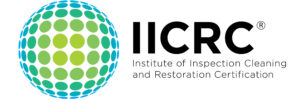IICRC Field Guide for Safety and Health for Disaster Restoration Professionals
The IICRC Field Guide for Safety and Health for Disaster Restoration Professionals’ will supplement existing IICRC restoration standards and certification classes. The guides will include valuable information about safety and health hazard identification procedures, safe work practices, and control methods that prudent disaster restoration and cleaning professionals should employ. These new field guides serve to address the needs of all participants of the cleaning and restoration industry, including cleaners, restorers, managers, end users, insurance adjusters, and indoor environmental professionals.
Field Guide Chair: Lee Senter Field Guide Vice-Chair: Jim Thompson

